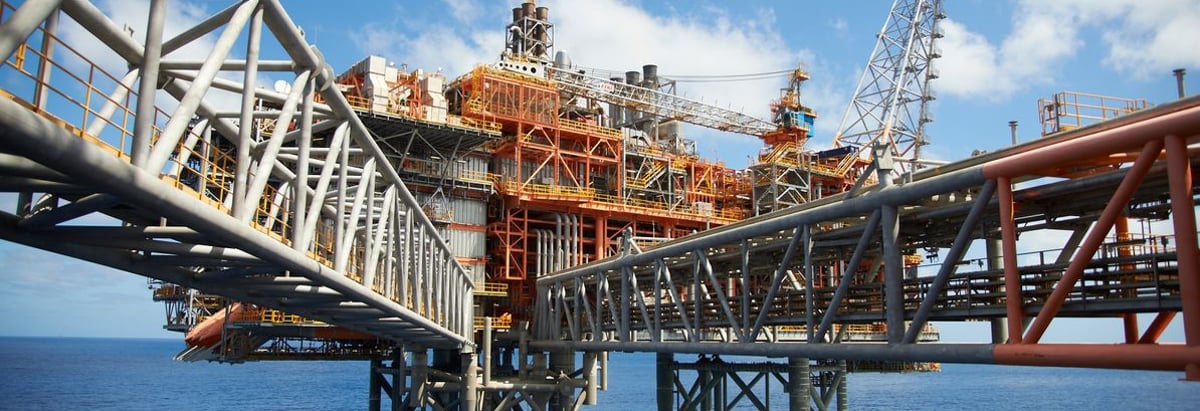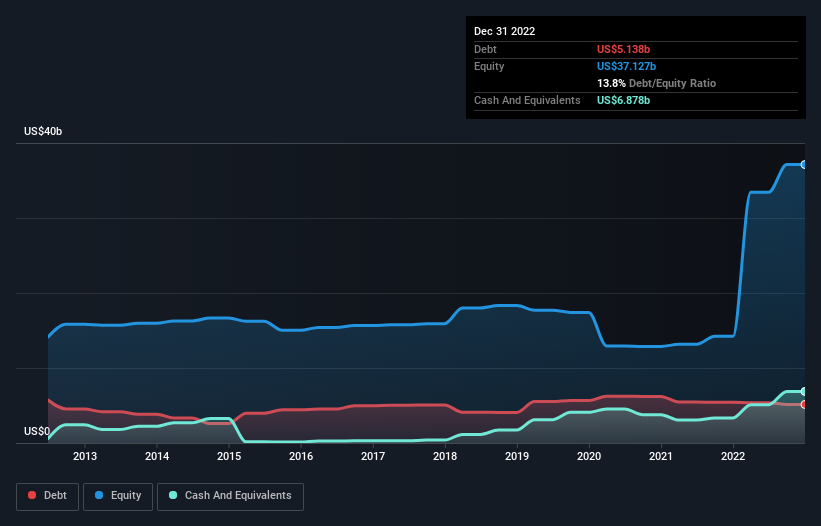
Legendary fund manager Li Lu (who Charlie Munger backed) once said, 'The biggest investment risk is not the volatility of prices, but whether you will suffer a permanent loss of capital.' So it might be obvious that you need to consider debt, when you think about how risky any given stock is, because too much debt can sink a company. As with many other companies Woodside Energy Group Ltd (ASX:WDS) makes use of debt. But the more important question is: how much risk is that debt creating?
Why Does Debt Bring Risk?
Debt is a tool to help businesses grow, but if a business is incapable of paying off its lenders, then it exists at their mercy. Part and parcel of capitalism is the process of 'creative destruction' where failed businesses are mercilessly liquidated by their bankers. However, a more usual (but still expensive) situation is where a company must dilute shareholders at a cheap share price simply to get debt under control. Of course, the upside of debt is that it often represents cheap capital, especially when it replaces dilution in a company with the ability to reinvest at high rates of return. When we examine debt levels, we first consider both cash and debt levels, together.
View our latest analysis for Woodside Energy Group
How Much Debt Does Woodside Energy Group Carry?
The image below, which you can click on for greater detail, shows that Woodside Energy Group had debt of US$5.14b at the end of December 2022, a reduction from US$5.43b over a year. However, it does have US$6.88b in cash offsetting this, leading to net cash of US$1.74b.

A Look At Woodside Energy Group's Liabilities
According to the last reported balance sheet, Woodside Energy Group had liabilities of US$6.61b due within 12 months, and liabilities of US$15.6b due beyond 12 months. Offsetting this, it had US$6.88b in cash and US$1.65b in receivables that were due within 12 months. So it has liabilities totalling US$13.7b more than its cash and near-term receivables, combined.
While this might seem like a lot, it is not so bad since Woodside Energy Group has a huge market capitalization of US$42.8b, and so it could probably strengthen its balance sheet by raising capital if it needed to. However, it is still worthwhile taking a close look at its ability to pay off debt. While it does have liabilities worth noting, Woodside Energy Group also has more cash than debt, so we're pretty confident it can manage its debt safely.
Better yet, Woodside Energy Group grew its EBIT by 151% last year, which is an impressive improvement. If maintained that growth will make the debt even more manageable in the years ahead. There's no doubt that we learn most about debt from the balance sheet. But ultimately the future profitability of the business will decide if Woodside Energy Group can strengthen its balance sheet over time. So if you're focused on the future you can check out this free report showing analyst profit forecasts.
Finally, a company can only pay off debt with cold hard cash, not accounting profits. While Woodside Energy Group has net cash on its balance sheet, it's still worth taking a look at its ability to convert earnings before interest and tax (EBIT) to free cash flow, to help us understand how quickly it is building (or eroding) that cash balance. Over the most recent two years, Woodside Energy Group recorded free cash flow worth 59% of its EBIT, which is around normal, given free cash flow excludes interest and tax. This free cash flow puts the company in a good position to pay down debt, when appropriate.
Summing Up
While Woodside Energy Group does have more liabilities than liquid assets, it also has net cash of US$1.74b. And we liked the look of last year's 151% year-on-year EBIT growth. So we don't think Woodside Energy Group's use of debt is risky. The balance sheet is clearly the area to focus on when you are analysing debt. However, not all investment risk resides within the balance sheet - far from it. For example Woodside Energy Group has 2 warning signs (and 1 which is concerning) we think you should know about.
At the end of the day, it's often better to focus on companies that are free from net debt. You can access our special list of such companies (all with a track record of profit growth). It's free.
Valuation is complex, but we're here to simplify it.
Discover if Woodside Energy Group might be undervalued or overvalued with our detailed analysis, featuring fair value estimates, potential risks, dividends, insider trades, and its financial condition.
Access Free AnalysisHave feedback on this article? Concerned about the content? Get in touch with us directly. Alternatively, email editorial-team (at) simplywallst.com.
This article by Simply Wall St is general in nature. We provide commentary based on historical data and analyst forecasts only using an unbiased methodology and our articles are not intended to be financial advice. It does not constitute a recommendation to buy or sell any stock, and does not take account of your objectives, or your financial situation. We aim to bring you long-term focused analysis driven by fundamental data. Note that our analysis may not factor in the latest price-sensitive company announcements or qualitative material. Simply Wall St has no position in any stocks mentioned.
About ASX:WDS
Woodside Energy Group
Engages in the exploration, evaluation, development, production, and marketing of hydrocarbons in the Asia Pacific, Africa, the Americas, and the Europe.
Excellent balance sheet low.


